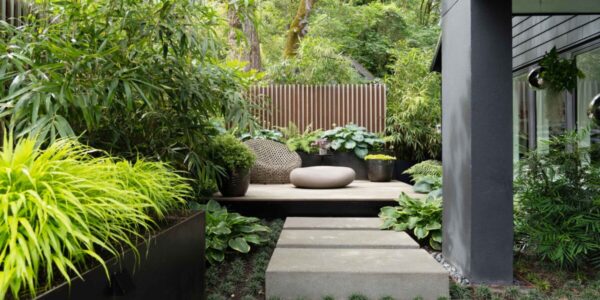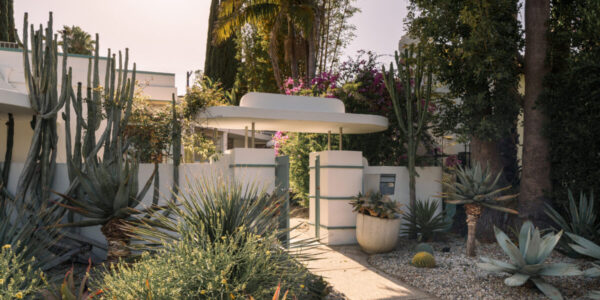
Planning a Small Garden
Determine your likes, down to the particulars. Moore knew she wanted a Mediterranean-style garden compatible with both her Spanish-style stucco home and its Mexican folk art-inspired interior. But she didn’t stop there. She read books, visited gardens, took notes, shot pictures, and kept track of it all in files organized by category until specific ideas emerged. The brick steps with broken tile inserts and matching bench, for instance, were inspired by a similar idea from the historic Adamson House in Malibu, California.
Devote a large portion of the property to hardscape. It’s irksome, but the reality is that the smaller the garden, the greater the ratio of hardscape to greenery. Fortunately, avid horticulturist though she is, Moore knew from the start that if she didn’t include room for people as well as plants, she wouldn’t have a garden.
Try it out on paper. Once Moore knew what she wanted to include—a dining alcove, a water feature, and several places for guests to sit—the challenge was figuring out how to fit it all in. She measured the yard, drew it to scale, covered the sheet with vellum, and tried out designs until she came up with a configuration that pleased her. With this sketch and photos from her files, Moore was able to give clear instructions to the crew she hired to install the garden.
